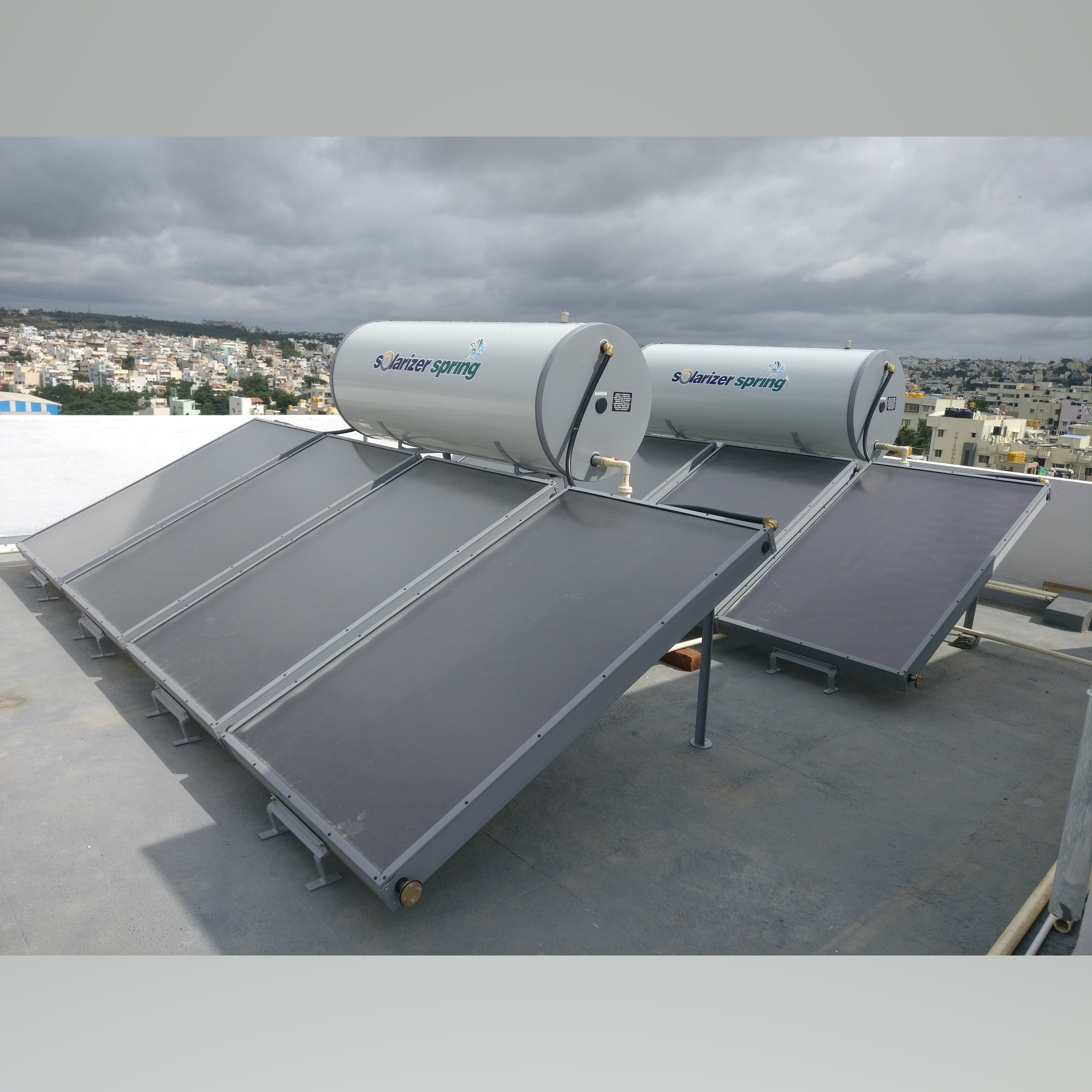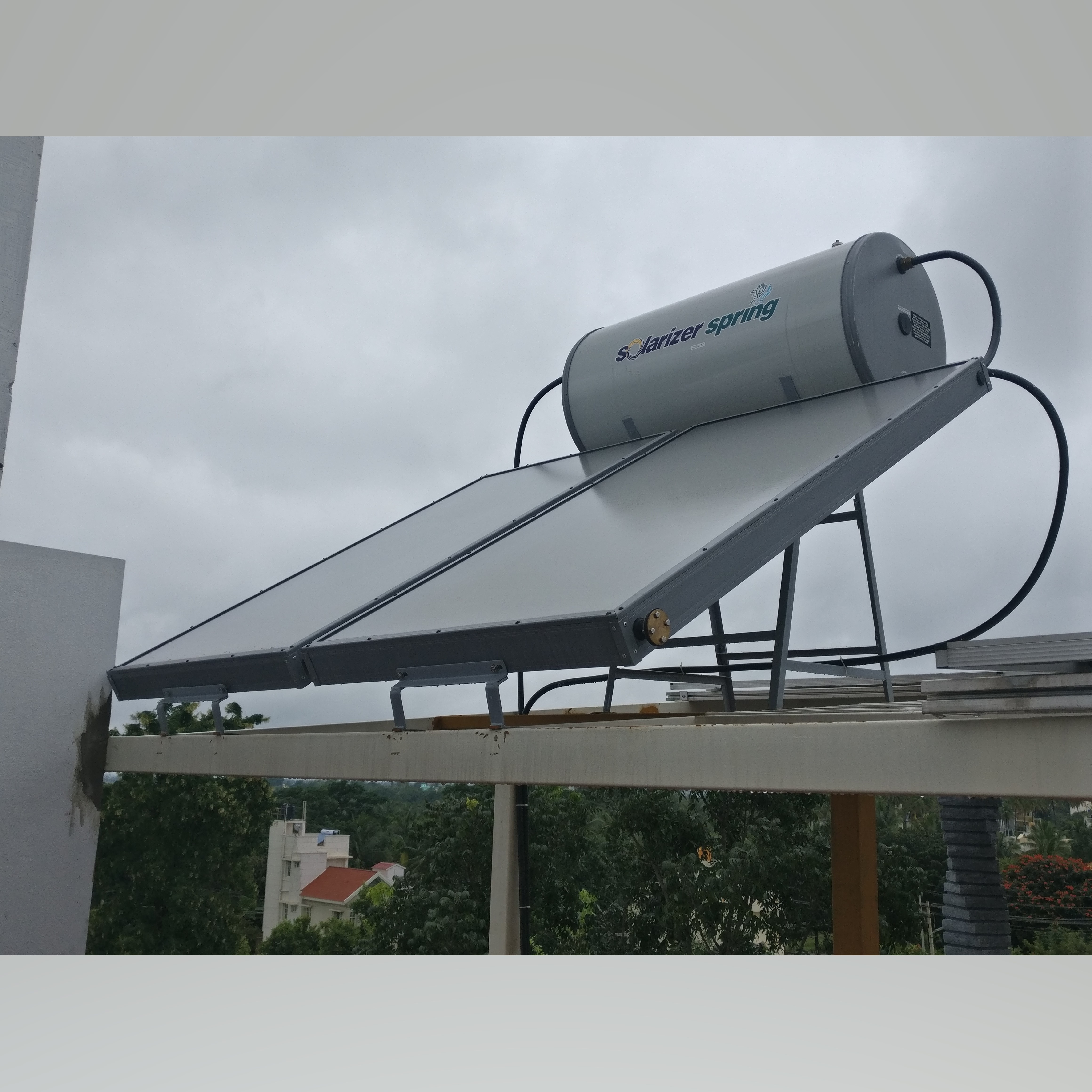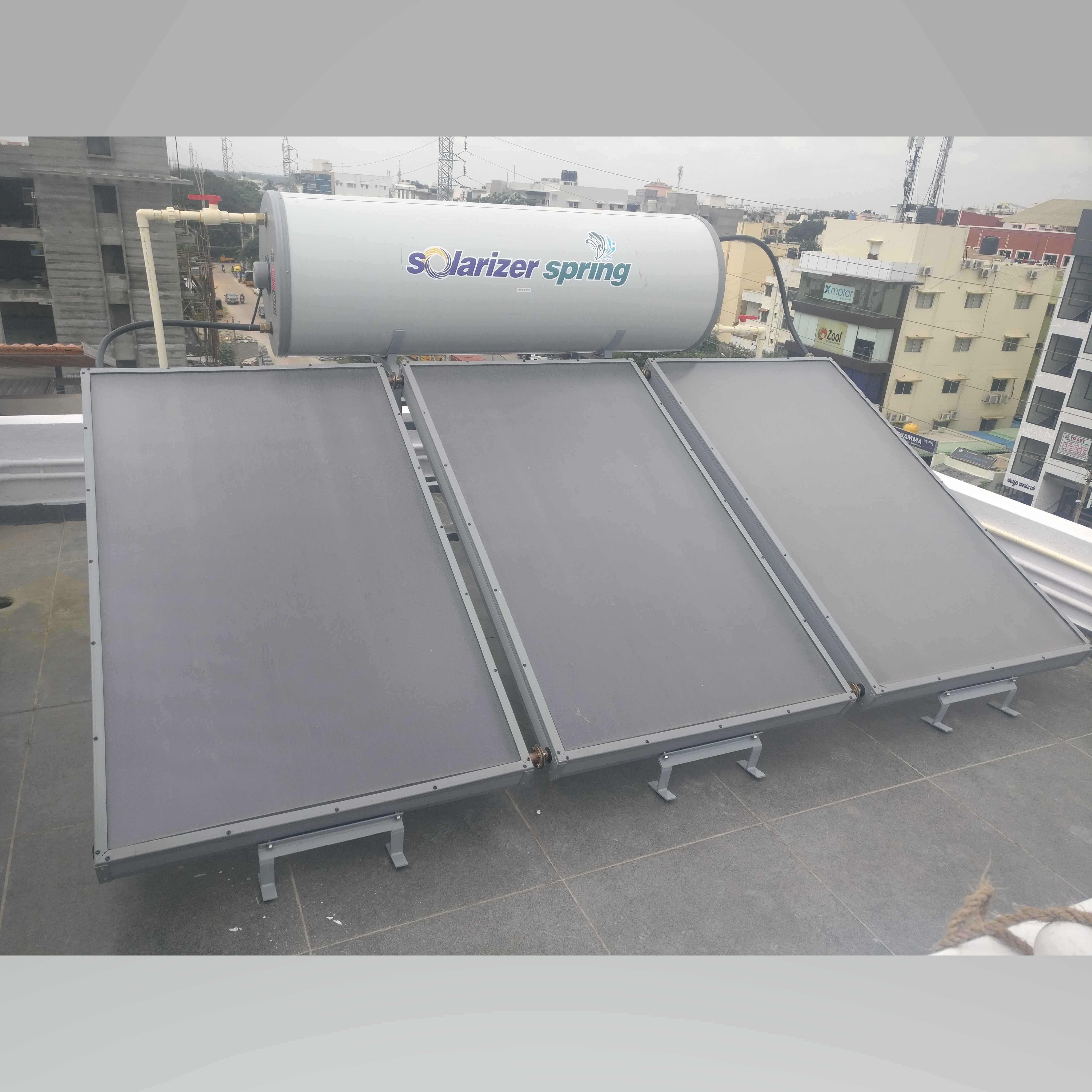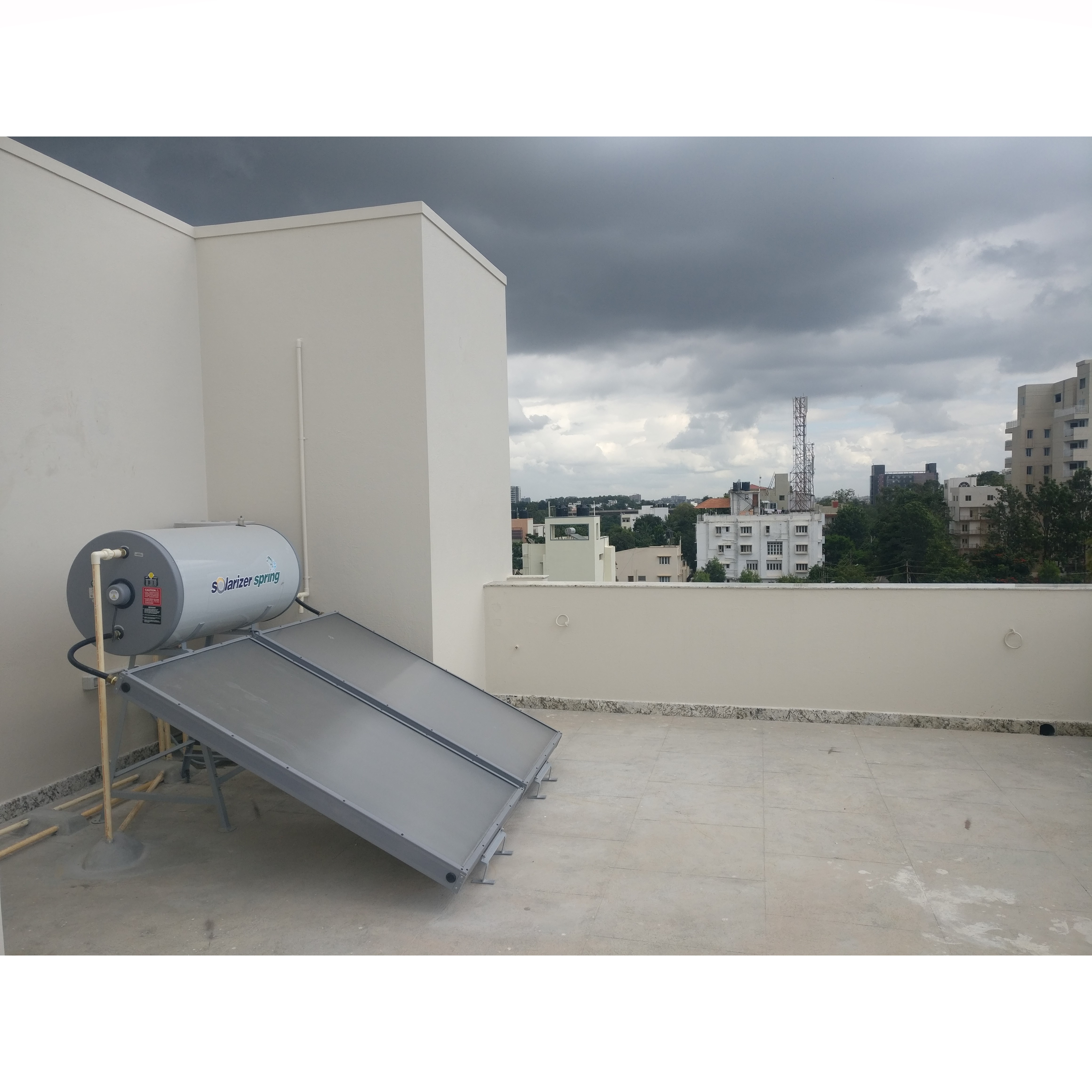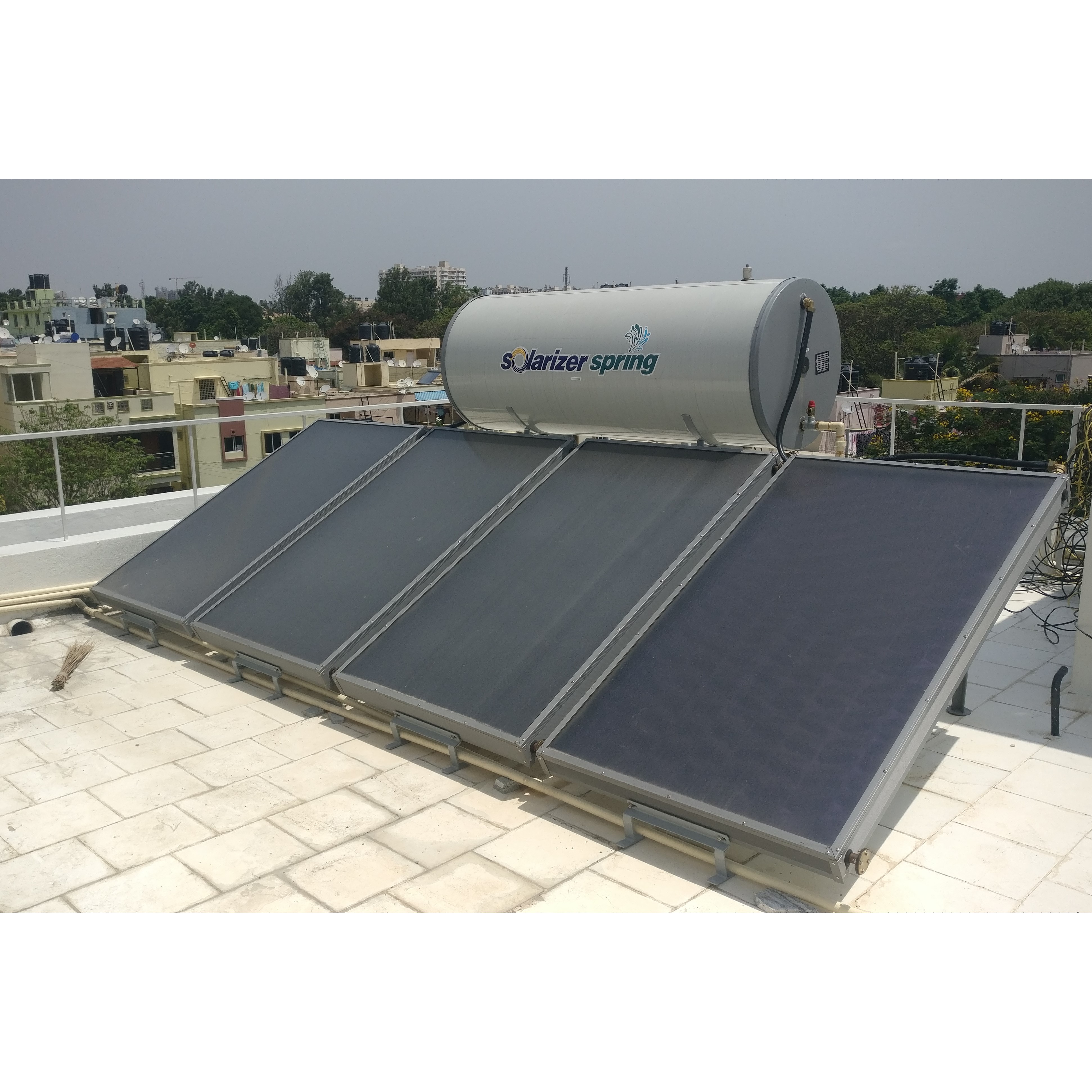Solar Water Heater
Solar water heater to work, it requires a set of solar collectors to absorb the solar energy. These collectors are then connected to an insulated tank that stores the hot water. When the sun is out, water is heated in the solar collectors which is then pumped or flown automatically through the thermosyphon principle to the storage tank.
A solar water heater is very useful in areas that experience power cuts. As this solar water heating system is designed with a storage unit, it can provide hot water as and when required. A solar water heater is an one time investment and a lifetime of savings because it runs on the principle of renewable energy.
Air Source Heat Pumps
An air source heat pump (ASHP) is a type of heat pump that absorbs heat from a colder place and release it into a warmer place using the same vapor-compression refrigeration process and same external heat exchanger with fan as used by an air conditioners. Unlike an air conditioning unit, however, it is able to both warm and cool building and in some cases also provide domestic hot water.
Air-to-air heat pumps are simpler devices and provide hot or cold air directly to the one or two internal spaces. By contrast, air-to-water heat pumps use radiators and / or underfloor heating to heat or cool a whole house and are often also used to provide domestic hot water. When correctly specified, an ASHP can offer a full central heating solution and domestic hot water up to 80 °C (176 °F).
Burning gas or oil will emit carbon dioxide and also nitrogen dioxide, which can be harmful to health. An air source heat pump issues no carbon dioxide, nitrogen oxide or any other kind of gas. It uses a small amount of electricity to transfer a large amount of heat: the electricity may be from a renewable source, or it may be generated from power stations which burn fossil fuel.
Integrated Water Heating Systems (Solar+Electric)
The tank water is heated either by the solar collector or the air source heat pump. An electric controller decides automatically which power source (solar or heat pump) will be used. Optionally, the system comes with a device to measure electricity consumption. The installation is designed for both newbuilds and building retrofits. It is available in sizes ranging from a capacity of 500 litres to 3,000 litres per day. The heat pumps have an electric power output of between 1 and 19 kW.


